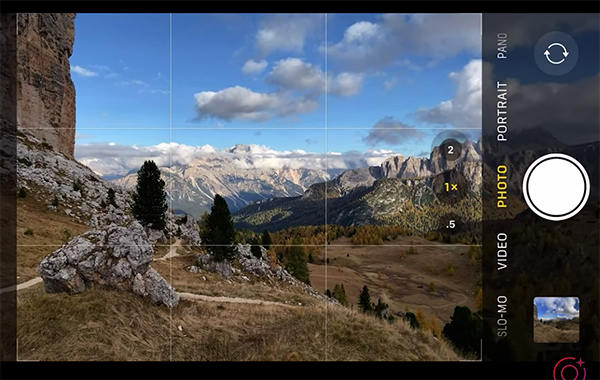Epic Landscape Photos with a Phone? Here’s How It’s Done (VIDEO)
Let’s say your weekend plans include a casual hike with the family, photography isn’t part of the itinerary, and your “real” gear will be resting at home. But as nature would have it you stumble upon a beautiful scene that begs to be photographed, so you reach for your iPhone and quickly make a few shots before your kids scream “you promised keep that thing in your pocket.”
Today’s tutorial provides several helpful techniques for doing a much better job the next time around. The five minute lesson comes from the iPhone Photography School whose motto is that you don’t need expensive cameras or heavy gear to capture jaw-dropping photographs—with no more burred shots or disappointing missed opportunities.
The unnamed instructor puts it like this, “Whether you’re shooting sunsets, portraits, everyday moments, or landscapes, you’ll never see your photos the same way again.” Today’s episode concentrates on the latter and reveals powerful composition tips, camera settings, and a key iPhone feature for getting the job done with success.

The form factor of a phone munch different (some would say awkward) than what you’re used to with a mirrorless camera or DSLR and can have an impact on how we frame up our shots. So keep this in mind as the instructor provides several effective composition tips that he illustrates with spectacular iPhone photos that would make any of us proud.
Suggestions include the importance of changing your vantage point, experimenting with perspective, and varying camera angles to suite the specific scene at hand. Not only will this affect how your subject is lit by the sun, but you’ll see how a simple shit to the left, right, up, or down will often provide a big boost.
The instructor says that “the iPhone’s 1X setting typically provides the best view for capturing expansive vistas. With the camera configured according, he demonstrates how his first composition gains it’s power by taking advantage of a strong vertical line formed by the compelling, slanted peaks,

The discussion continues with a thoughtful discussion of the iPhone’s Panorama mode, describing the quick process of using it to advantage for capturing almost effortless ultra-wide images that really grab attention. Tips include dealing with movement and aligning mages to perfection.
There’s much more to learn, so grab your phone and experiment with these powerful tips as they’re explained. Then head out over the weekend and see what you’re able to create.
And for some more universal outdoor photography tips check out the recent tutorial we featured with a notable expert who demonstrates how to capture stunning urban landscape photographs when shooting after dark.





